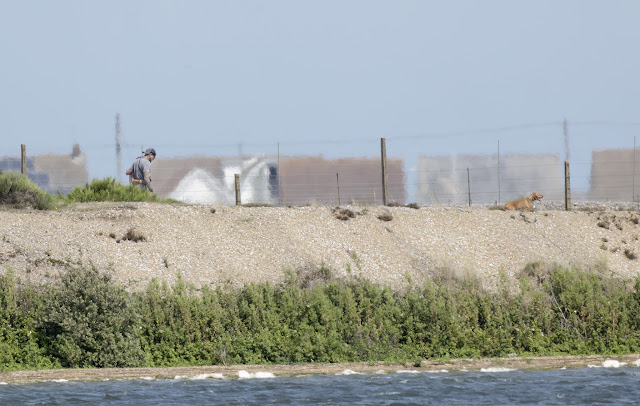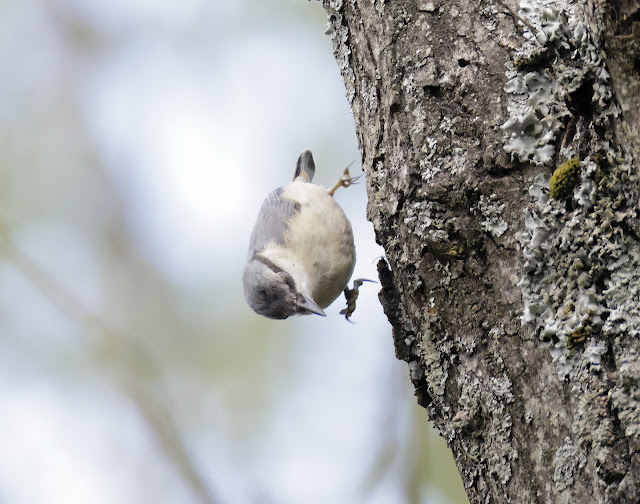In July and August duck numbers on the RSPB Reserve increase, especially Pochard and Gadwall as males visit the pits on the reserve to moult and obtain their eclipse plumage. I've been making counts on behalf of the RSPB for a few years now and this year noticed the numbers of males arriving at the reserve start to significantly increase from about mid-June.
So it was a busy day today as I tried to do a duck count across the reserve and managed to reach a total of 1,006 Pochard and 636 Gadwall. An additional 180 Pochard were counted on Lade Pits which is also part of the RSPB Reserve. I think that makes the second highest count (1,186) of Pochard on the reserve since I moved to the area back in 2019.
3 Garganey are now in residence with two preferring ARC and the third on Burrowes. The female Red-crested Pochard and duckling remain on ARC with an eclipse male Red-crested Pochard on Dengemarsh.
The remaining Common Tern colonies on Dengemarsh and Burrowes are still producing chicks with 8 on a very noisy colony from Dengemarsh Hide today and hopefully more than the one I saw back on the 12th July at Burrowes.
Returning wader numbers are gradually increasing with 4 Wood Sandpipers, 1 Greenshank, 1 Redshank, 18 Little-ringed Plovers, 2 Ringed Plovers and 10 Common Sandpipers.
A trip with Martin and Richard out of the area in search of Purple Emperor butterfly ended with us not seeing that but enjoying woodland bird species that are rare or tricky to see on the peninsula.
















Keep up the good work John, though I think educating dog walkers will be a never ending task.
ReplyDelete